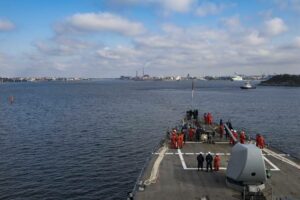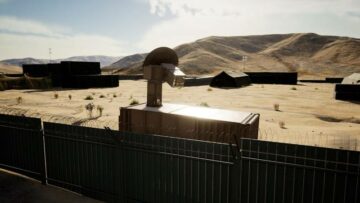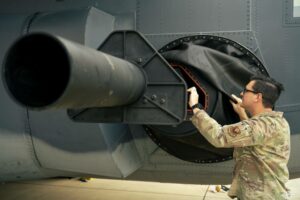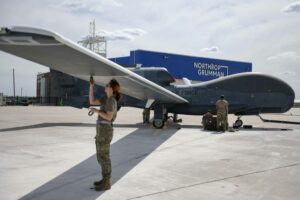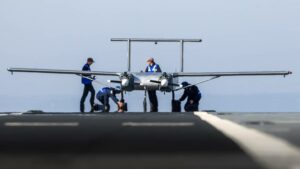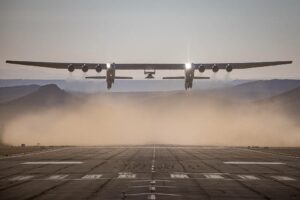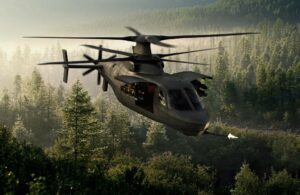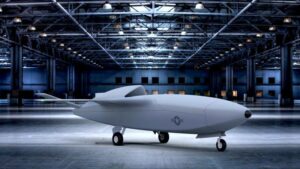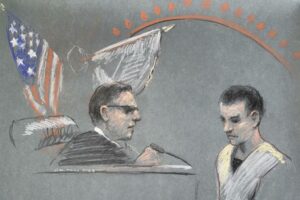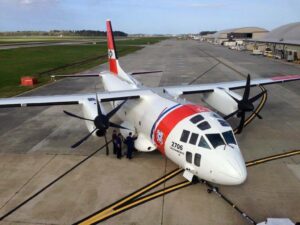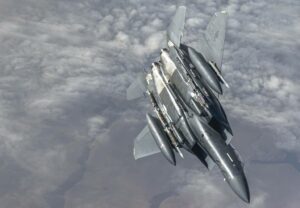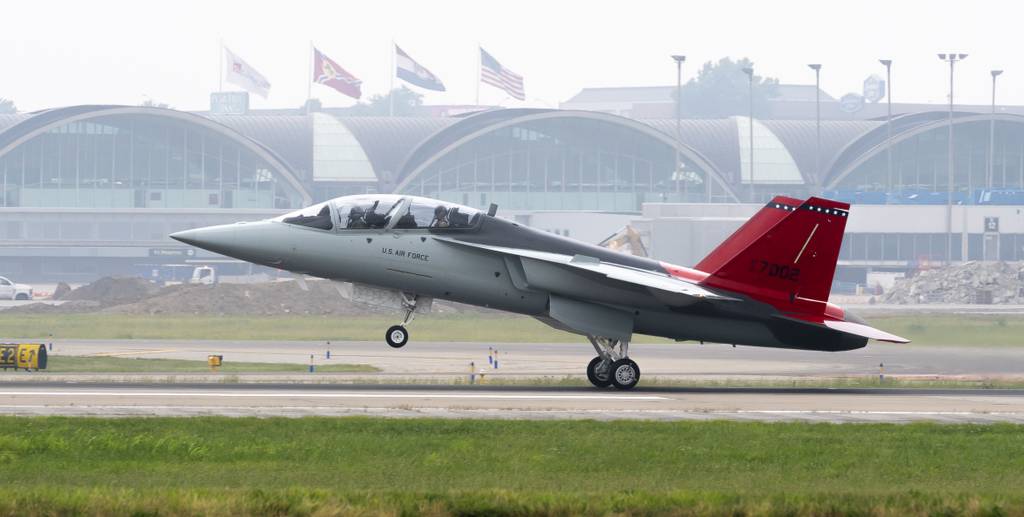
WASHINGTON — The U.S. Air Force plans to fly its first T-7A Red Hawk trainer halfway across the country to Edwards Air Force Base in California for further testing as soon as Oct. 26.
Col. Kirt Cassell, the Air Force’s T-7 program manager, told Defense News on Friday that the service’s first four T-7 test pilots are days away from beginning their familiarization and training flights at Boeing’s facility in St. Louis, Missouri.
Those Air Force pilots’ flights will pave the way for this first T-7, which Boeing officially delivered to the Air Force in mid-September, to travel to Edwards in a series of ferrying flights possibly next week, he said.
These are experienced pilots with thousands of flight hours each, he added, and would likely just need about two flights before becoming qualified.
“They’re trained to be able to fly pretty much any aircraft you put them in, but you still need to get them qualified in that aircraft,” Cassell said. “That usually takes a handful of sorties.”
The T-7 will be the Air Force’s next jet aircraft for training new pilots. It’s designed to emulate a fifth-generation fighter such as the F-22 and F-35. The Air Force plans to buy 351 Red Hawks to replace its 504 aging T-38 Talon trainers.
But the program is years behind schedule due to problems such as a potentially dangerous escape system and faulty flight control software. The T-7 was originally scheduled to reach initial operational capability in 2024, but that has now slipped to spring 2027.
Boeing officials have continued preoperational maintenance and other support for the T-7 since the Air Force accepted the first one. Boeing said in an email to Defense News that ground testing of the jet’s latest software is complete and that the company’s own flight testing is about to begin.
Cassell said Boeing pilots are scheduled to fly the T-7 on Oct. 20.
The Air Force and Boeing are also going through testing processes to ensure no surprises pop up during the ferrying flights.
Cassell said that the T-7, as a new aircraft, has “run into a couple [of] growing pains” that the service and Boeing are working through. For example, he said, a leaking aileron was discovered on the T-7 and needed to be replaced.
But Cassell described such nonconformance problems as standard for a new program. Although the late-October delivery of the T-7 to Edwards is slightly behind the Air Force’s expectation earlier this year that it would happen in September, Cassell said he is comfortable with the program’s pace.
“It’s the cost of doing business when you put together a new aircraft,” he said. “We’re stretching its legs, trying to get it out there and flying. … There’s a steep learning curve.”
The ferrying flights will likely take two or three days, he said, and involve three or four stops along the way. Those stops will give the pilots a chance to rest and for a support crew to refuel the T-7 as well as check out how well it’s performing.
A Boeing Challenger business jet, which will also carry spare parts, maintainers, and other support crew and pilots, will shadow the T-7. The ferrying pilots will include Air Force pilots from Edwards’ 416th Flight Test Squadron, which will receive qualification on the jet next week, and Boeing test pilots.
“It’s an extensive effort” to prepare this first T-7 for the roughly 1,800-mile flight to Edwards, Cassell said.
“It hasn’t been flown a lot,” he added. “We haven’t tested its navigation system yet. So you need to have an aircraft with a known, tested, fielded navigation system [chase the T-7] so the two aircraft can safely get across the country.”
Cassell said the Oct. 26 goal for the ferry flights to begin will depend on weather conditions. Thunderstorms or low, heavy clouds could prompt the Air Force to delay takeoff and wait for clearer skies.
Boeing has also worked at Edwards to prepare for the first T-7′s arrival, Cassell said, such as by delivering and setting up a simulator and other activities to get ready for flight tests. Both Boeing and Air Force test pilots will fly the T-7 once it gets to Edwards.
Cassell said the Air Force is also continuing to test fixes to the T-7′s problematic escape system and flight control software, which earlier this year caused the program to be re-baselined and fall further behind schedule.
Tests of the T-7′s escape system in 2021 found it could be dangerous and cause concussions or other injuries to ejecting pilots. The Air Force and Boeing worked to redesign it.
In the next two or three weeks, Cassell said, the Air Force plans to test the escape system’s redesigned drogue chute at an on-the-ground testing site in Utah run by Collins Aerospace, a subsidiary of RTX. And work is underway to model how the T-7′s canopy fractures to allow a pilot to eject through it.
The remaining tests should tell the Air Force and Boeing how else the escape system’s design needs tweaked, he said, and those changes will undergo testing on the ground in January or February.
The T-7 that will soon fly to Edwards has received new and updated flight control software, Cassell noted. Those flight controls are still being refined, he said, but the test aircraft have all the changes needed to start flight testing.
More Red Hawks on the way
The Air Force is also preparing for the delivery of the next four T-7s in the coming months.
Boeing is expected to deliver the Air Force’s second T-7 around the first week of November, Cassell said, and it will be flown to Eglin Air Force Base in Florida for testing in the base’s McKinley Climatic Laboratory in mid- to late November. An F-15 or F-16 from Eglin’s 40th Flight Test Squadron will likely “chase” this T-7 on its trip.
The climate testing is designed to emulate various temperatures and weather scenarios to make sure the T-7 can operate safely in a variety of conditions. At one point, the lab will subject the T-7 to cold soaking, where the jet is immersed in frigid temperatures and then operated. Another test is called solar loading, where lights replicating the effect of long exposures to bright Texas sun on a flight line are shone on the T-7 to ensure it runs as intended.
Once that T-7′s climate testing is done in January 2024, Cassell said, it will probably fly back to St. Louis for more flight tests, and later out to Edwards for a short period of mission systems testing.
The third T-7 is also on its way and is expected to fly to Edwards around the end of November, after Thanksgiving, he added.
The fourth and fifth T-7s are still on track for delivery by the end of December. Those jets will stay at the St. Louis facility for the immediate future, where the Air Force will conduct technical order certification and verification. That is a detailed process in which Air Force and Boeing maintainers go over the T-7′s manuals to ensure that, for example, the procedure for changing a battery in the plane is exactly how it is described in writing.
“It could [find problems] as simple as: ‘It says remove 10 screws … but there’s only nine screws,’ ” Cassell said. “It’s labor intensive, but it’s very important to make sure that we’re doing appropriate sustainment and maintenance on the aircraft.”
Stephen Losey is the air warfare reporter for Defense News. He previously covered leadership and personnel issues at Air Force Times, and the Pentagon, special operations and air warfare at Military.com. He has traveled to the Middle East to cover U.S. Air Force operations.
- SEO Powered Content & PR Distribution. Get Amplified Today.
- PlatoData.Network Vertical Generative Ai. Empower Yourself. Access Here.
- PlatoAiStream. Web3 Intelligence. Knowledge Amplified. Access Here.
- PlatoESG. Carbon, CleanTech, Energy, Environment, Solar, Waste Management. Access Here.
- PlatoHealth. Biotech and Clinical Trials Intelligence. Access Here.
- Source: https://www.defensenews.com/air/2023/10/20/heres-when-the-first-t-7-trainer-is-to-fly-to-edwards-air-force-base/
- :has
- :is
- :where
- $UP
- 1
- 10
- 11
- 1st
- 20
- 2020
- 2021
- 2024
- 26
- 40th
- 70
- a
- Able
- About
- accepted
- across
- activities
- added
- Aerospace
- After
- Aging
- AIR
- Air Force
- aircraft
- All
- allow
- along
- also
- Although
- an
- and
- Another
- any
- appropriate
- ARE
- around
- arrival
- AS
- At
- away
- back
- base
- battery
- BE
- becoming
- been
- before
- begin
- Beginning
- behind
- being
- Boeing
- both
- Bright
- built
- business
- but
- buy
- by
- california
- called
- CAN
- Canopy
- capability
- carry
- Cause
- caused
- Certification
- challenger
- Chance
- Changes
- changing
- chase
- check
- class
- clearer
- Climate
- cold
- Collins
- collins aerospace
- COM
- comfortable
- coming
- Company’s
- complete
- conditions
- Conduct
- continued
- continuing
- control
- controls
- Cost
- could
- country
- Couple
- course
- cover
- covered
- crew
- curve
- Dangerous
- Davis
- Days
- December
- Defense
- delay
- deliver
- delivered
- delivering
- delivery
- described
- Design
- designed
- detailed
- discovered
- doing
- done
- due
- during
- each
- Earlier
- East
- edwards
- effect
- else
- end
- ensure
- escape
- exactly
- example
- expectation
- expected
- experienced
- extensive
- Facility
- Fall
- faulty
- February
- fifth
- Find
- First
- flight
- Flights
- florida
- flying
- For
- Force
- found
- four
- Fourth
- Friday
- from
- front
- further
- future
- get
- Give
- Go
- goal
- going
- graduate
- Ground
- Growing
- halfway
- handful
- happen
- Have
- Hawk
- he
- heavy
- here
- HOURS
- How
- HTTPS
- images
- immediate
- immersed
- important
- in
- include
- initial
- intended
- into
- involve
- issues
- IT
- ITS
- January
- Jets
- jpg
- just
- known
- lab
- labor
- laboratory
- Late
- later
- latest
- Leadership
- learning
- legs
- likely
- Line
- loading
- Long
- Lot
- Louis
- Low
- maintenance
- make
- manager
- Middle
- Middle East
- Military
- Mission
- model
- months
- more
- much
- Navigation
- Need
- needed
- needs
- New
- news
- next
- next week
- nine
- no
- noted
- November
- now
- Oct
- of
- Officially
- officials
- on
- once
- ONE
- only
- operate
- operated
- operational
- Operations
- or
- order
- originally
- Other
- out
- over
- own
- Pace
- parts
- pave
- pentagon
- performing
- period
- Personnel
- pilot
- Pilots
- plane
- plans
- plato
- Plato Data Intelligence
- PlatoData
- Point
- pop
- possibly
- potentially
- Prepare
- preparing
- pretty
- previously
- probably
- problems
- procedure
- process
- processes
- Production
- Program
- put
- qualification
- qualified
- reach
- ready
- receive
- received
- Red
- redesign
- redesigned
- refined
- remaining
- remove
- replace
- replaced
- reporter
- REST
- roughly
- rtx
- Run
- runs
- s
- safely
- Said
- says
- scenarios
- schedule
- scheduled
- Second
- September
- Series
- service
- setting
- Shadow
- Short
- should
- Simple
- simulator
- since
- site
- sits
- skies
- So
- Software
- solar
- Soon
- special
- spring
- standard
- start
- State
- stay
- Still
- Stops
- subject
- subsidiary
- such
- Sun
- support
- sure
- surprises
- system
- Systems
- Take
- takes
- Technical
- tell
- test
- tested
- Testing
- tests
- texas
- Thanksgiving
- that
- The
- their
- Them
- then
- There.
- Third
- this
- this year
- those
- thousands
- three
- Through
- times
- to
- together
- told
- track
- trained
- Training
- travel
- traveled
- trip
- trying
- two
- u.s.
- U.S. Air Force
- undergo
- Underway
- updated
- usually
- utah
- variety
- various
- Verification
- very
- wait
- walks
- was
- Way..
- Weather
- week
- Weeks
- WELL
- when
- which
- will
- with
- Work
- worked
- working
- would
- writing
- year
- yet
- you
- zephyrnet

